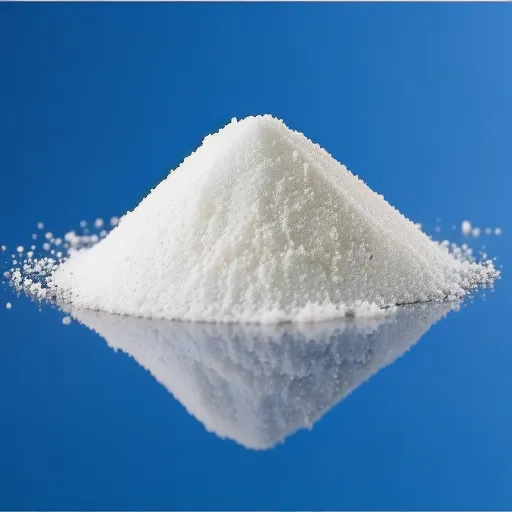Le superphosphate simple (SSP) est l'un des engrais phosphatés les plus anciens et les plus utilisés. Il apporte des nutriments essentiels aux cultures, notamment dans les sols carencés en soufre et en calcium. Comprendre la composition chimique du SSP, son procédé de production et ses méthodes d'application pratiques est essentiel pour les agriculteurs, les agronomes et toute personne impliquée dans la gestion des sols. Cet article explore l'identité chimique du SSP, ses principaux avantages agricoles et des directives d'application détaillées.
Qu'est-ce que le superphosphate simple (SSP) ?
Le superphosphate simple (SSP) est produit par réaction de roche phosphatée finement broyée avec de l'acide sulfurique. Le principal produit de cette réaction est phosphate monocalcique monohydraté (Ca(H₂PO₄)₂·H₂O), ainsi que gypse (CaSO₄·2H₂O) comme sous-produit. Le SSP se caractérise par sa capacité à fournir non seulement phosphore mais aussi soufre et calcium, tous les nutriments essentiels à la croissance des plantes.
Phosphore (P₂O₅): 16–22 % (soluble dans l'eau)
Calcium (Ca): 19–21 %
Soufre (S): 10–12 %
Ces nutriments jouent un rôle clé dans développement des racines, floraison, structure du sol, et synthèse des protéines dans les cultures.
Le processus de production du SSP
La production de SSP implique une réaction exothermique entre roche phosphatée (généralement de la fluorapatite) et acide sulfuriqueL'équation chimique de base de cette réaction est la suivante :
Ca₁₀(PO₄)₆F₂ + 7 H₂SO₄ + 3 H₂O → 3 Ca(H₂PO₄)₂·H₂O + 7 CaSO₄ + 2 HF
Ce processus crée un mélange principalement composé de phosphate monocalcique (MCP), qui est très soluble dans l'eau et fournit phosphore disponible aux plantes, tandis que gypse (CaSO₄) est libéré comme coproduit.
Étapes clés de la fabrication SSP :
Prétraitement des roches phosphatées:La roche est broyée en une poudre fine pour augmenter la surface, améliorant ainsi la réaction avec l'acide sulfurique.
Acidulation:La roche phosphatée moulue est mélangée avec acide sulfurique à 98 % à des températures comprises entre 100 °C et 120 °C pendant 30 à 60 minutes pour former du MCP et du gypse.
Durcissement et granulation:Après la réaction, le mélange est durci pendant 7 à 14 jours pour terminer les réactions chimiques, puis granulé pour une manipulation facile.
Séchage et criblage:Les granulés sont séchés pour réduire la teneur en humidité à moins de 5 %, puis triés en tailles optimales (généralement 2 à 4 mm).
Les plantes modernes utilisent contrôles automatisés, systèmes d'épuration des gaz résiduaires, et technologies de recyclage des déchets pour répondre aux normes environnementales.
Avantages et applications agronomiques
Le SSP est principalement utilisé comme engrais phosphoré mais fournit également des nutriments secondaires comme calcium et soufre, ce qui le rend idéal pour une variété de sols et de cultures. Le phosphore contenu dans le SSP est hydrosoluble, ce qui permet une absorption rapide par les plantes, tandis que calcium aide à améliorer la structure du sol et à réduire son acidité. Soufre est particulièrement bénéfique pour cultures oléagineuses et synthèse des protéines dans les céréales.
Directives de candidature pour le SSP :
L'application correcte du SSP dépend du type de sol, des besoins des cultures et de la disponibilité spécifique du phosphore dans le sol. Voici les directives générales d'application :
Céréales (riz, blé): 200–250 kg/ha
Légumineuses (soja, haricots): 150–200 kg/ha
Horticulture (Tomate, Agrumes): 300–400 kg/ha
Placement:
Le SSP devrait être appliqué basalement pendant le semis ou les premiers stades de la culture, en veillant à ce qu'il soit placé dans la zone racinaire (environ 5 à 10 cm sous la surface du sol) pour minimiser la fixation du phosphore et améliorer l'absorption.
Types de sols:
Sols acides (pH <5.5) benefit from SSP’s acidifying nature, while sols calcaires (riche en calcium) peut nécessiter une incorporation immédiate pour éviter la précipitation du phosphore.
Considérations environnementales et manipulation sécuritaire
Alors que SSP présente un risque environnemental relativement faible par rapport aux engrais azotés, mais une utilisation excessive peut contribuer à eutrophisation dans les plans d'eau en raison d'un ruissellement excessif de phosphore. Il est essentiel d'utiliser le SSP conformément aux Gestion des nutriments 4R: La bonne source, le bon tarif, le bon moment et le bon endroit.
Manipulation de sécurité:
Le SSP est légèrement corrosif en raison de la présence d'acide sulfurique résiduel. Une manipulation appropriée comprend :
Résistant gants de protection, masques anti-poussière, et protection des yeux.
Stockage dans zones ventilées à l'abri de l'humidité et des produits chimiques réactifs pour éviter l'agglomération.
Comparaison du SSP avec d'autres engrais phosphatés
Le SSP est souvent comparé à d’autres engrais phosphatés comme Triple superphosphate (TSP), Phosphate diammonique (DAP), et Phosphate monoammonique (MAP)Bien que le SSP fournisse moins de phosphore par unité que le TSP ou le DAP, il fournit des nutriments supplémentaires comme le soufre et le calcium, ce qui en fait un choix idéal pour les sols déficients en ces éléments.
Tableau comparatif :
| Engrais | P₂O₅ (%) | Soufre (%) | Calcium (%) | pH approprié | Indice des coûts |
|---|---|---|---|---|---|
| SSP | 16-22 | 10-12 | 19-21 | Alcalin | Base |
| TSP | 44-48 | 0-1 | 12-14 | Acide à neutre | Plus haut |
| DAP | 46 | 0 | 0 | Neutre | Plus haut |
SSP est particulièrement précieux pour les cultures comme graines oléagineuses et légumineuses, où le soufre et le calcium sont des nutriments essentiels.
Conclusion : Choisir le bon engrais pour vos cultures
Le SSP demeure un engrais essentiel et efficace pour améliorer le rendement des cultures, notamment dans les sols carencés en soufre et en calcium. En comprenant sa composition chimique, ses avantages et ses techniques d'application, les agriculteurs peuvent prendre des décisions éclairées pour améliorer la fertilité des sols et optimiser la productivité des cultures.
Lors de la sélection des engrais, tenez toujours compte de facteurs tels que la composition du sol, les besoins des cultures et les conditions environnementales pour garantir l’utilisation la plus efficace et la plus durable des nutriments.

